Binance Smart Chain vs Ethereum: Who is the winner of the blockchain world?
Before the launch of Binance Smart Chain (BSC), Ethereum alone was ruling the blockchain world. Binance Smart Chain is currently emerging as the most prominent rival from the Defi industry.
(Defi applications or decentralized applications are the financial applications created on blockchain that allows digital transactions between parties)
This blog is a comprehensive comparison guide on Binance Smart Chain vs Ethereum. So, towards the end of this write-up, you will have a better understanding of both platforms and which one will be a good choice for you.
However, both Binance Smart Chain (BSC) and Ethereum look similar at first glance. Even your public wallet addresses are the same on both blockchains. Moreover, DApps and tokens built on Binance Smart Chain are compatible with (EVM)Ethereum Virtual Machine.
Despite having lots of similarities, there are various noticeable distinctions between the two blockchains. The Binance Smart Chain developers have made noticeable changes in some key areas. One of the most significant changes is in the consensus mechanism, which results in cheaper and faster transactions on this blockchain platform.
Due to the increasing popularity of both Ethereum and Binance Smart Chain, many questions are running through blockchain lovers’ minds. Crypto enthusiasts still wonder how the head-to-head comparison of Binance Smart Chain vs Ethereum will play out. Will BSC be better than its counterpart or vice versa, or else both are equal in terms of functionality and feasibility? What makes Binance Smart Chain differ from Ethereum? Is Binance Smart chain will take the place of Ethereum in the future?
All these questions will be answered, and all your doubts regarding Binance Smart Chain vs Ethereum, which is best? will be cleared after reading this blog.
Now, first, have a look at the market capitalization of Ethereum over the years.
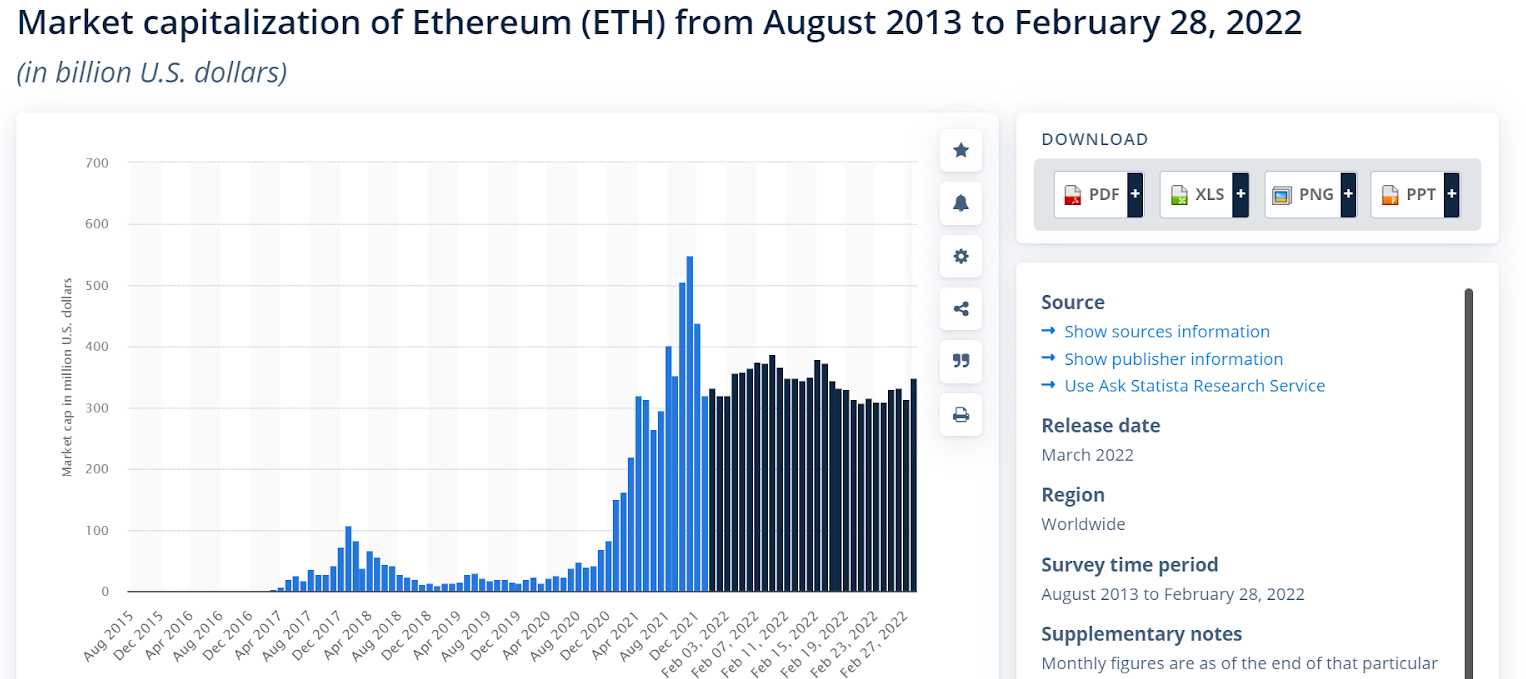
It is clearly seen that Ethereum was ruling the blockchain world, but in recent years its popularity has declined.
Now, look at the market capitalization of BSC over the years in the following graph.
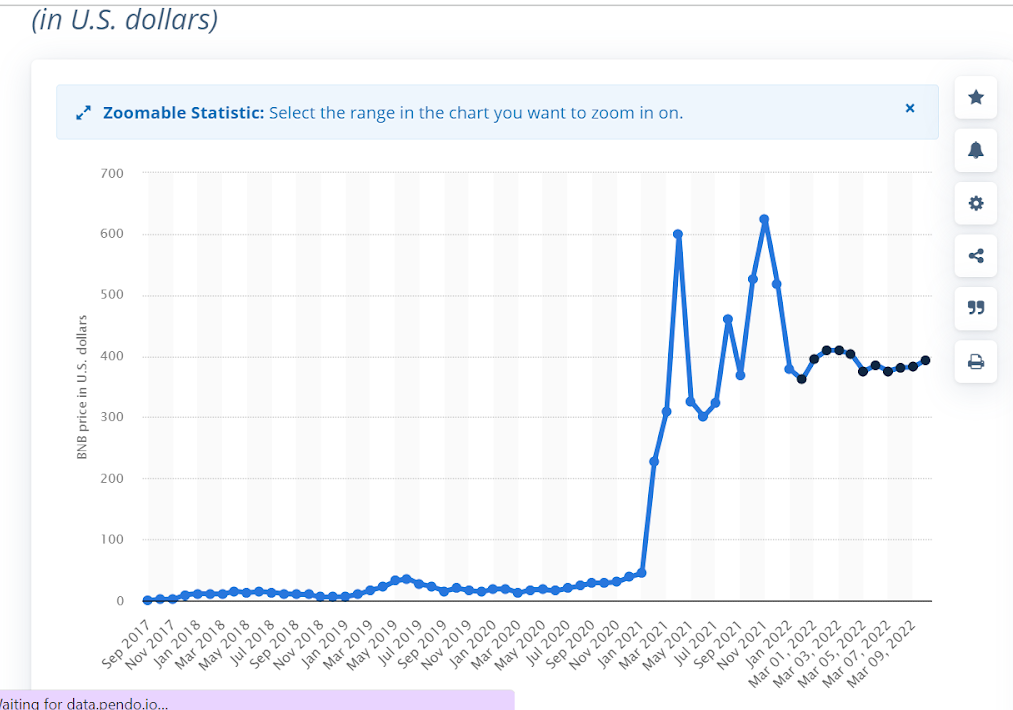
The key takeaway from both these graphs is that the duration in which the Ethereum market cap starts to decline, in same duration market cap of BSC touches its high point. But it’s too early to say that BSC will slowly take the place of Ethereum.
We believe that learning from the basics about both of these blockchains may help readers develop their own opinions.
Without further delay, let’s dive deeper and explore the best.

Binance Smart Chain vs Ethereum: Let’s start from Basics
We will understand both these blockchains in detail, how they work and the advantages and disadvantages associated with them under this section.
Binance Smart chain
For understanding the Binance Smart chain we will first learn what is Binance (the originator of BSC).
What is Binance?
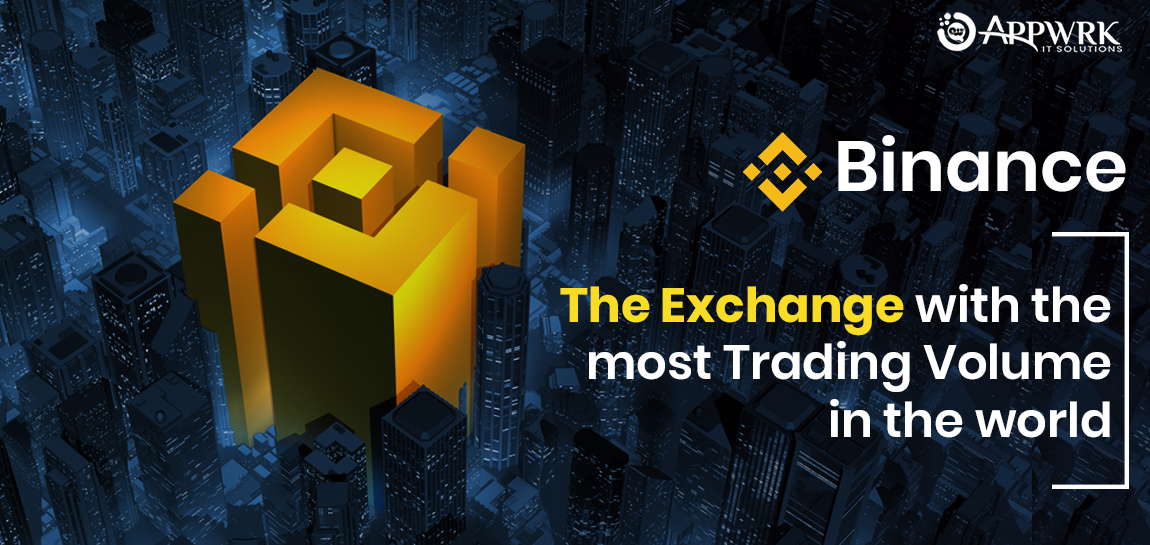
Binance is a crypto trading exchange platform launched by Changpend Zhao in 2017. This firm was initially launched in China, but later on due to increased Chinese regulation threatening its business, it got relocated to the Cayman Islands. Within a short span of time, Binance has become one of the biggest cryptocurrency trading platforms in the world. The top benefits of using this crypto exchange platform are relatively low fees and a massive list of trading pairs.
What is Binance Smart Chain?
Binance Smart Chain or BSC is a new platform launched by Binance in 2019. It is a blockchain network created for running smart contract-based applications. This platform aims to enable users to manage their digital assets cross-chain with large capacity and low latency. It also provides a space to create Dapps and other Defi products.
Binance Smart Chain runs side-by-side with Binance Chain. The Binance team launched it to offer an alternative to Ethereum and other leading Defi platforms. In this way, users get the benefits of both worlds- the smart contract functionality of BSC and the high transaction capacity of the Binance chain.
Binance Smart Chain is different from Binance chain in terms of
- Ability to run smart contracts;
- Compatibility with Ethereum, i.e., the ability to transfer Dapps from Ethereum to BSC;
- Ability to create Dapps and Defi projects;
- BNB Stacking.
BSC got great traction in early 2021, because of Ethereum’s high gas fees, staking investors and developers looking for other options.
How does it work?

However, both BC and BSC are considered Binance networks, but assets transfer is not possible between them as their wallet formats are different. The native coin of the Binance network is BNB. This coin is used to pay fees on Binance DXE in Binance Chain. While in Binance Smart Chain, it is used to deploy stacking, smart contracts, and token exchange. The BSC uses the Proof-or-Authority protocol (PoSA) to operate. This protocol needed that network validator stake a specific number of BSC tokens to participate, which results in BSC validators being compensated through fees charged for every validated transaction. In this way BC and BSC allow users to make quick transfers on the Binance Chain at the same time using the smart-contracts functionality of the Binance Smart Chain within the same user interface.
Advantages of Binance Smart chain
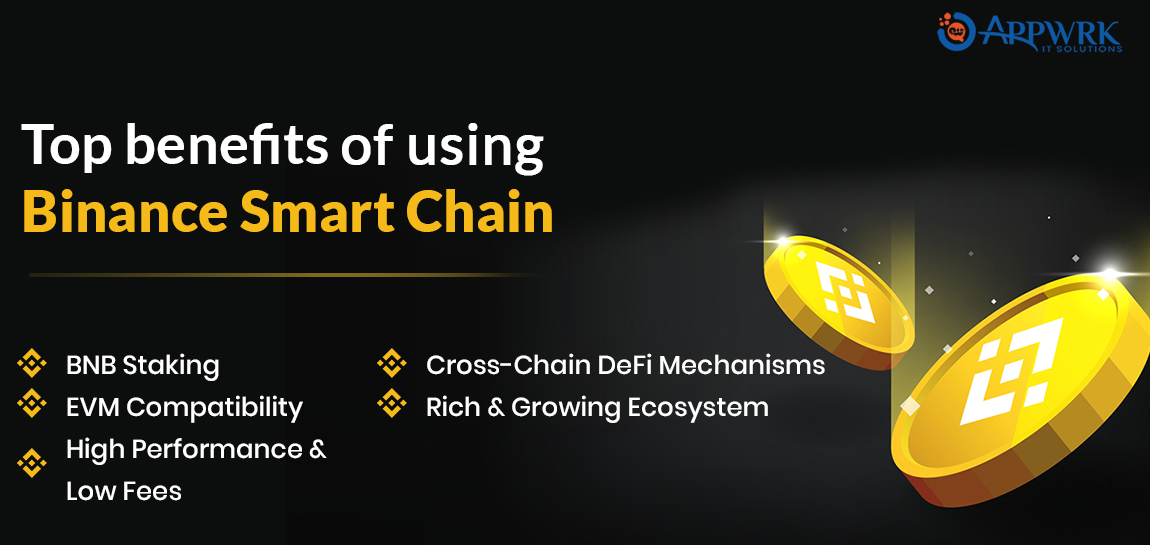
- Inexpensive Transaction– Low transaction fees are one of the biggest advantages of using this blockchain platform. Do you know a similar transaction on Ethereum could cost over 1,000 times more than on BSC in times of significant Ethereum network congestion?
- Faster Adoption Rates- The centralized nature of Binance Smart Chain provides various advantages Binance already has a great user base, from which can attract more users to Binance Smart Chain. It results in faster adoption rates.
- Easy Token Migration– As developers establish various cross-chain bridges, thus BSC users can effortlessly move their tokens from one network to another.
- Various Language Availability- BSC websites are available in various languages. In fact, Binance UI is translated into 16 languages.
Disadvantages of Binance Smart chain
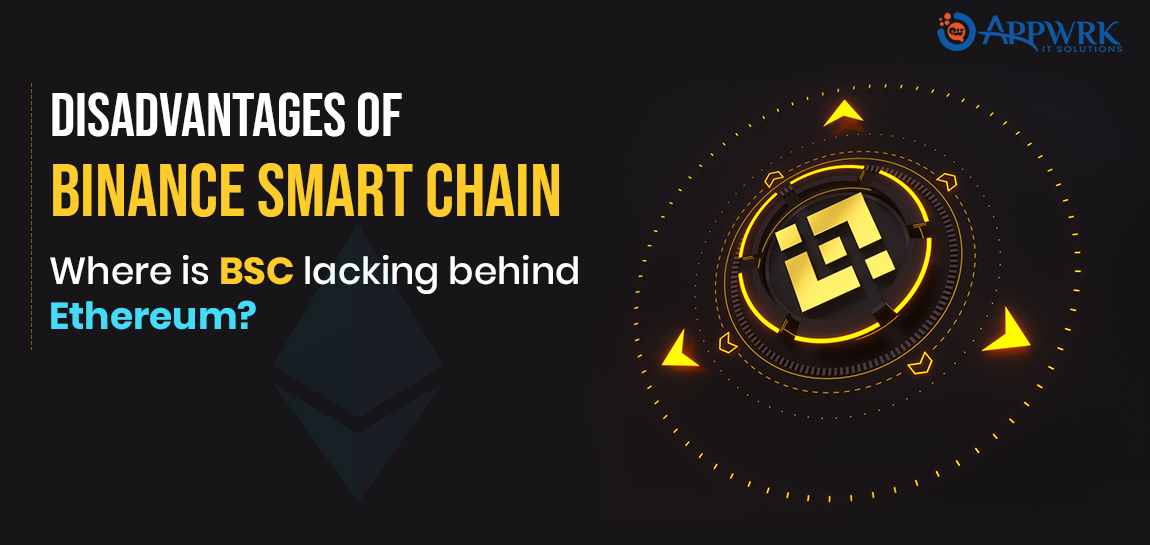
- Dependency on Ethereum- One of the major drawbacks of the Binance Smart Chain is its dependency on the dev community of Ethereum. Hence every innovation in Binance Smart Chain is carried forward from Ethereum only.
- Centralization- Binance Smart Chain is also centralized just like BSC.
- Thus, mostly all Binance Chain top validators are directly or indirectly managed by Binance.
- Security- As this blockchain is centralized, there are more chances of hacks and system failures.
Ethereum
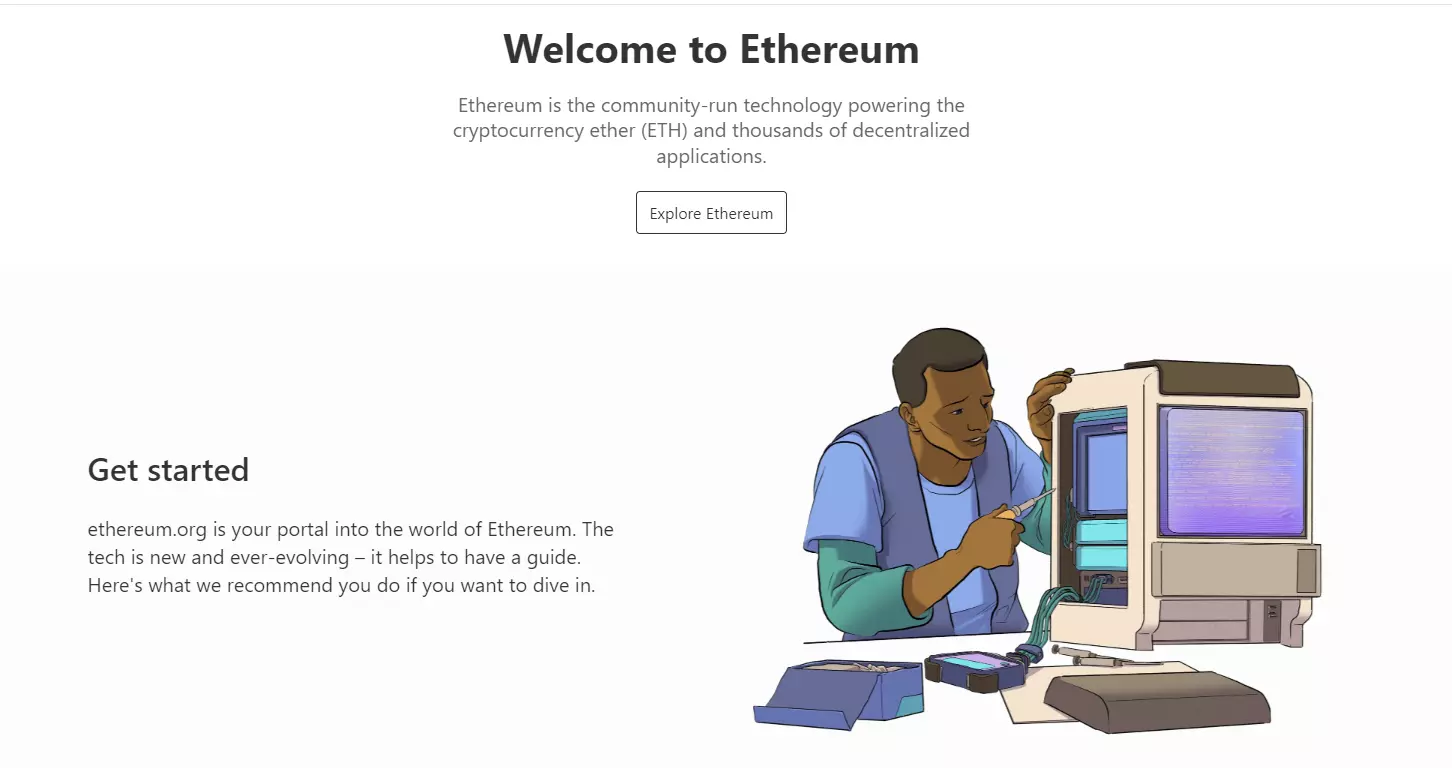
Ethereum is a decentralized open-source blockchain platform. However, it was founded in 2013 by the programmer Vitalik Buterin, but it is the brainchild of 8 cofounders and made its debut in 2015. This blockchain platform creates a peer-to-peer secure network that executes and verifies application code, which is called smart contracts. Smart contracts offer users to transact with each other without a need for a trusted central authority. Ethereum gives participants full ownership and visibility into transaction data; this is the top reason people are crazy about this platform.
Ethereum is one of the best crypto platforms that has gained tons of popularity in the last few years. The crypto or token of this platform is called an Ether.
Let’s move on to explore how this blockchain works.
How does it work?

Ethereum works on a blockchain network, which is a distributed and decentralized public ledger wherein all transactions are recorded and verified.
- Distributed- It means that those who participate in Ethereum hold an identical copy of this ledger.
- Decentralized- It means all of the distributed ledger holders manage the network.
In Ethereum, blockchain transactions use cryptography to ensure the security of transactions. Each transaction on the network is confirmed only after users solve complex mathematical equations. Users are then rewarded with cryptocurrency tokens called Ether (ETH). This token Ether can be used to buy and sell services and goods like Bitcoin.
“Ethereum is different from Bitcoin as in former network can do computation as a part of the mining process, which increases the authenticity of your transactions.” – Ken Fromm ( Director at Enterprise Ethereum Alliance )
Advantages of Ethereum

- Ethereum is decentralized- After Bitcoin, Ethereum is the second most decentralized cryptocurrency globally. However, some organizations and people have control over this blockchain, but there has been no centralized authority till now.
- Ethereum is more than a cryptocurrency- This platform can be used in different sectors like medicine, gaming, energy distribution, etc. It is best to foster tokenization of voting history, medical records, crypto collectibles, ID verification, and other complex agreements.
- Interoperability- Any app built on Ethereum can instantly connect with hundreds of other already existing protocols. This is known as money legos.
- High Security– This blockchain has a huge community of active developers across the world. Hence it is quite impossible for malicious users to gain control over the blockchain.
Disadvantages of Ethereum

- Slow Speed- One of the biggest drawbacks of the Ethereum platform is its slow speed. It has an average speed of 18 transactions per second, and transaction fees are also high. In contrast BSC’s average speed is 300 transactions per second.
- Investment is risky– Investment in Ethereum can be risky like other cryptocurrencies. Ether’s price has gone through many ups and downs in the past, which can be a big drawback for beginners
- High Transaction fees– This is one of the main reasons blockchain users are migrating to the Binance Smart chain.
Head-to-Head Comparison of Binance Smart Chain vs Ethereum
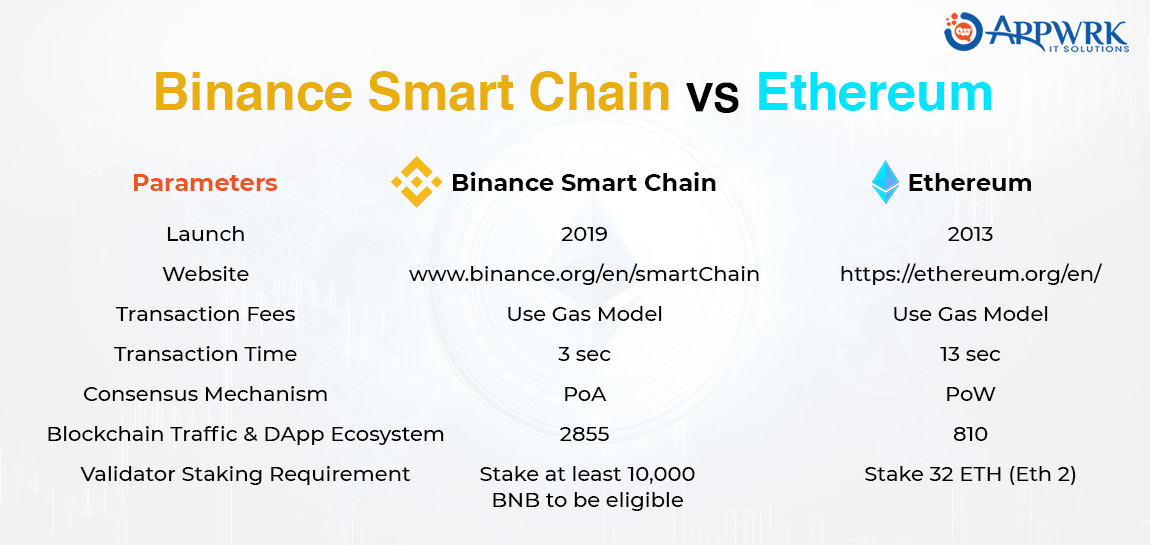
Binance Smart Chain vs Ethereum: Transaction Time
It’s quite complex to measure the average time on the blockchain. A transaction is complete only when the miner validates the block it is in. Many other factors affect the time you wait; the most common ones are-
- Miners may delay your transaction or not include it in a block if you haven’t set your gas fees high enough.
- Multiple transactions are required for more complex blockchain interactions.
- Most services will consider a transaction valid only after confirming a certain number of blocks. It reduces the risk of service providers and merchants as the payment is returned in case the block is rejected.
Let’s check out the average block time of Binance Smart Chain vs Ethereum in the following graphs.
The average block time for Binance Smart Chain is 3 seconds.

By looking at this graph, we can say that the average transaction time for Ethereum ranges between 30 seconds to 16 minutes.
Hence in terms of transaction time, Binance Smart Chain is the winner.
Binance Smart Chain vs Ethereum: Transaction fees
However, both these blockchain platforms use a gas model for transaction fees that evaluate the complexity of a transaction. But in BSC, users can set gas prices as per the network demand, and miners can prioritize transactions with higher gas prices. On the other hand, in Ethereum, there are base fees per block. This base fee changes depending on the demand for transactions. Hence users can’t decide the gas price by themselves in Ethereum. Ethereum activated London hard fork in August 2021, which is expected to reduce the need for high gas fees.
Have a look at the average transaction fees of both these blockchain platforms over the last three months.
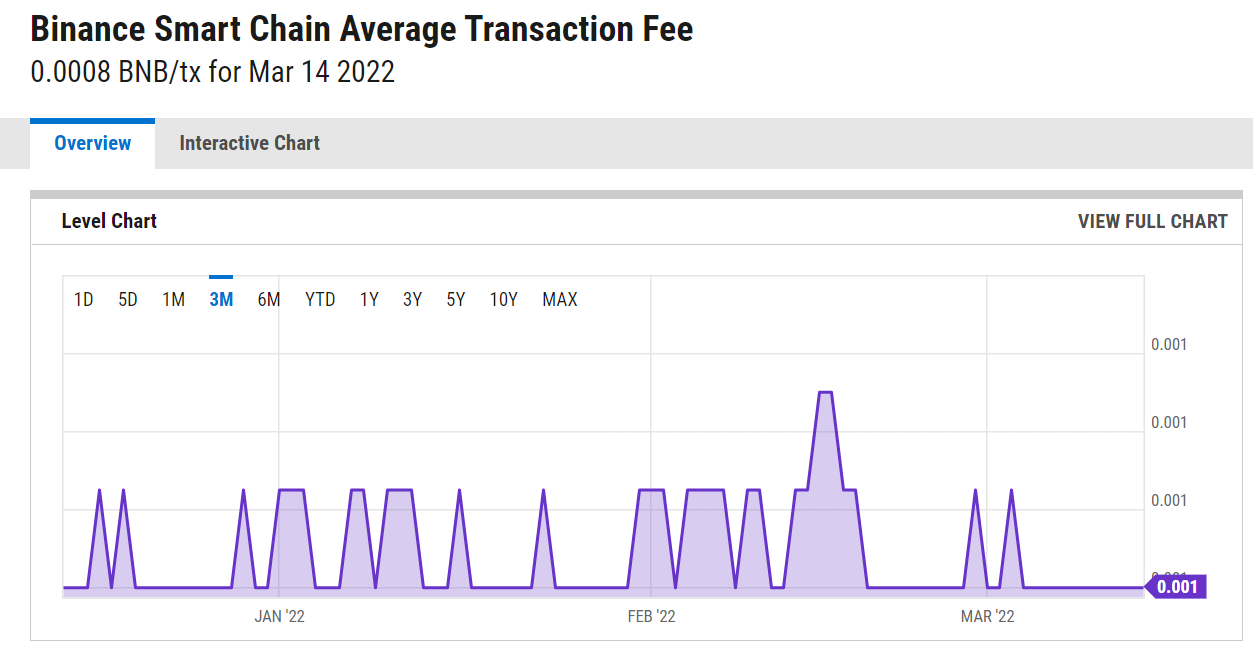

As per the above graphs;
Average transaction fees of Binance Smart Chain- 0.0008 BNB/tx or 0.29 USD/tx
Average transaction fees of Ethereum – 1.511 USD/tx
Hence Binance Smart Chain is a winner in terms of transaction fees.
Binance Smart Chain vs Ethereum: Consensus Mechanism
A consensus mechanism of a blockchain is a fault-tolerance process that is used in the blockchain systems and computers to come to the needed agreement on a single data value or a single state of the network among multi-agent systems or distributed processes such as with cryptocurrencies.
Considering Binance Smart Chain vs Ethereum, the Ethereum Proof of Work (PoW) consensus mechanism is just like Bitcoin one. But it is quite different from Proof of Staked Authority (PoSA) of BSC.
However, this difference is not there now, as, in Ethereum 2.0, the network uses the Proof of Stake (PoS) mechanism.
The Binance Smart Chain Power of Stake Authority combines Proof of Authority (PoW) and Delegated Proof of Stake (DPoS). As a result, 21 validators take turns to create blocks and thus receive BNB transaction fees as a reward.
*The validators are selected by Binance team only. In order to become a validator, it is required to run a node and stake at least 10,000 BNB.
Hence in BNB, participants stake BNB to become validators. Other users (delegators) stake BNB behind an elected candidate. The top 21 selected candidates will take turns processing the block and receive transaction fees from the transactions included in it. Delegators, too get a share of the rewards. We can say that in this model, Binance has complete control over the blockchain. Moreover, they all can decide who will become validators. Therefore, users are left with no option other than believing Binance will behave in their interest. On the other hand, in Ethereum, there is a race to solve the computational puzzle instead of the community choosing the validators. Users need to buy or rent specialized mining equipment to participate in the puzzle.
So, if you have more computation power, the more puzzles you can solve first and validate a block. In return, miners receive ETH rewards as transaction fees. However, Ethereum PoW is an excellent consensus mechanism and ensures security, but as developers explore other mechanisms like Proof of Stake, they found it more efficient and environmentally friendly. It is the reason Ethereum is also adopting this new mechanism. Hence both blockchain platforms- BSC and Ethereum have effective consensus mechanisms.
Binance Smart Chain vs Ethereum: Blockchain Traffic and Dapp ecosystem
The motive of all programmatic chains is to host decentralized applications (Dapps) and decentralized financial protocols (DeFi). In June 2021 there were 4546 DApps in the crypto segment, out of them around 2800 running on Ethereum and 810 running on BSC. However, the difference is too much, but BSC is a new technology and creating its space in the crypto world.
In 2020, out of 1353 DApps submitted to DappRadar 424 run on Ethereum blockchain. Besides this, out of 225 DeFi projects listed this year, 203 are on Ethereum and 43 are on BSC. Although Ethereum adoption is quite impressive in the DeFi section, BSC is also competing in the race.
Now check out the cumulative unique address added to Binance Smart Chain vs Ethereum in the last one year
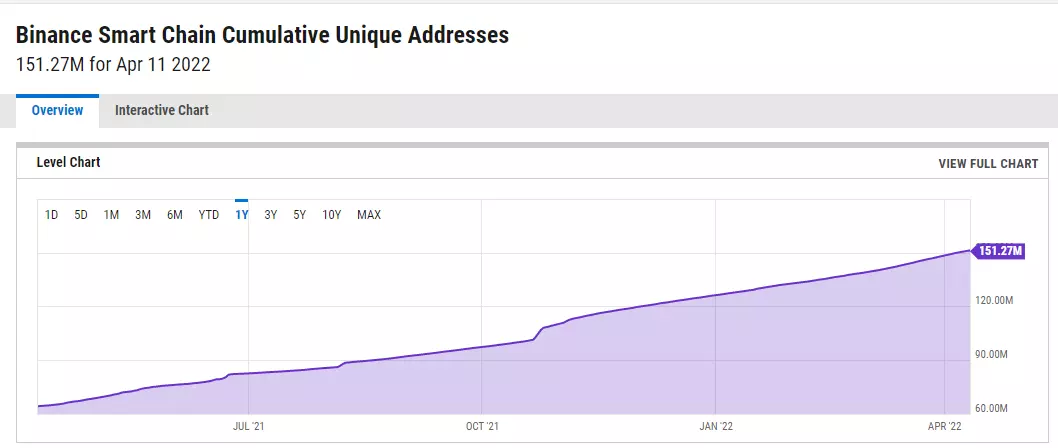

It is depicted from these graphs that BSC has gained a more unique address in the last year. The BSC growth is not only due to its less transaction fees but also due to growing hype around NFTs and the compatibility with popular crypto wallets. To understand your crypto wallet requirement, you should consult with a proficient crypto wallet development company.
Binance Smart Chain vs Ethereum: Most used DeFi DApps
Due to blockchain compatibility, many DApps cross over between Ethereum and Binance Smart Chain, considering decentralized finance. It is easier for developers to port applications from Ethereum to BSC. The new BSC projects generally reuse open-source code from Ethereum under a new name.
Let’s have a look at the top 5 DApps of Binance Smart Chain vs Ethereum on DAppRadar
Binance Smart Chain Top 5 DApps
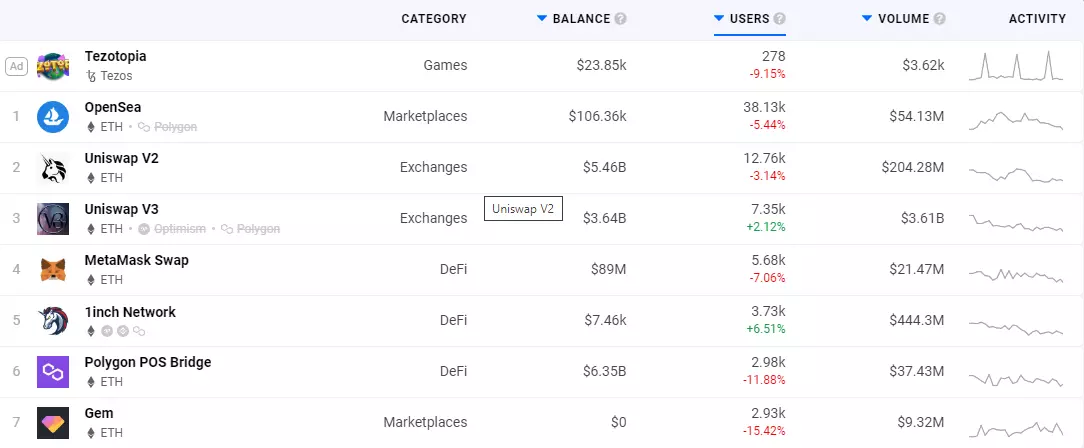
Ethereum Top 5 DApps
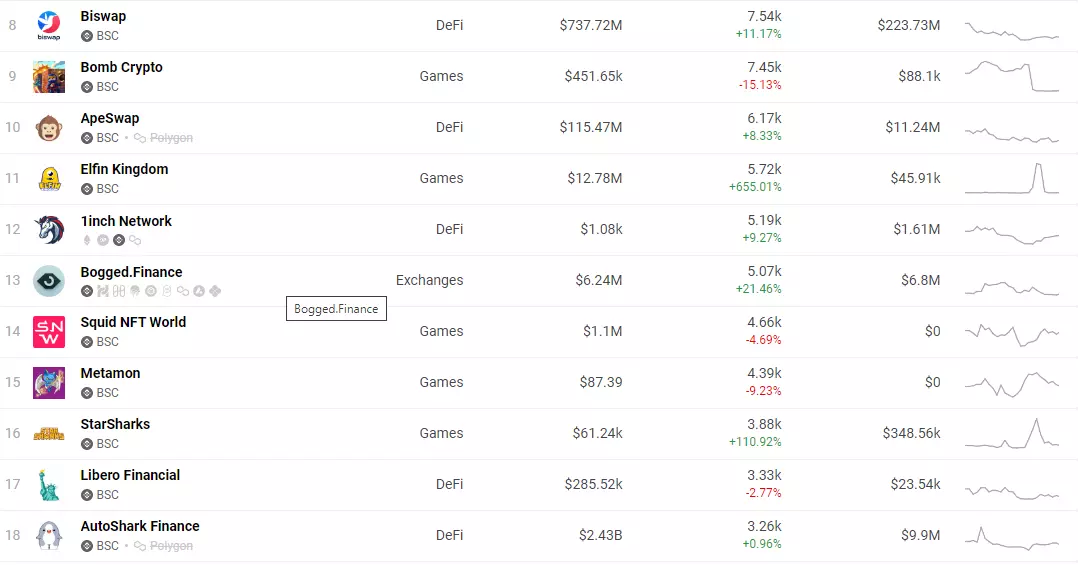
If we talk about crypto games, all the famous and leading blockchain games are created on Ethereum. However, some gaming projects on BSC are giving competition to popular games CryptoKitties and Axie Infinity but failed to get a big audience.
Binance Smart Chain vs Ethereum: Transfer Between Networks
If you deposit BEP-20 or ERC-20 into your wallet, you will notice that your BCS and Ethereum wallet addresses are the same. Hence, if you choose the wrong network by mistake while withdrawing your tokens from an exchange, it’s easier for you to retrieve them from other blockchains. If you accidentally withdraw ERC-20 tokens to BSC, don’t worry; you still find them in the corresponding BSC address. Similarly, if by mistake you send tokens from BSC to Ethereum, you can follow the same process. In both these cases, your fund will remain safe.
Final Verdict- BSC or Ethereum, which will shine in the blockchain world
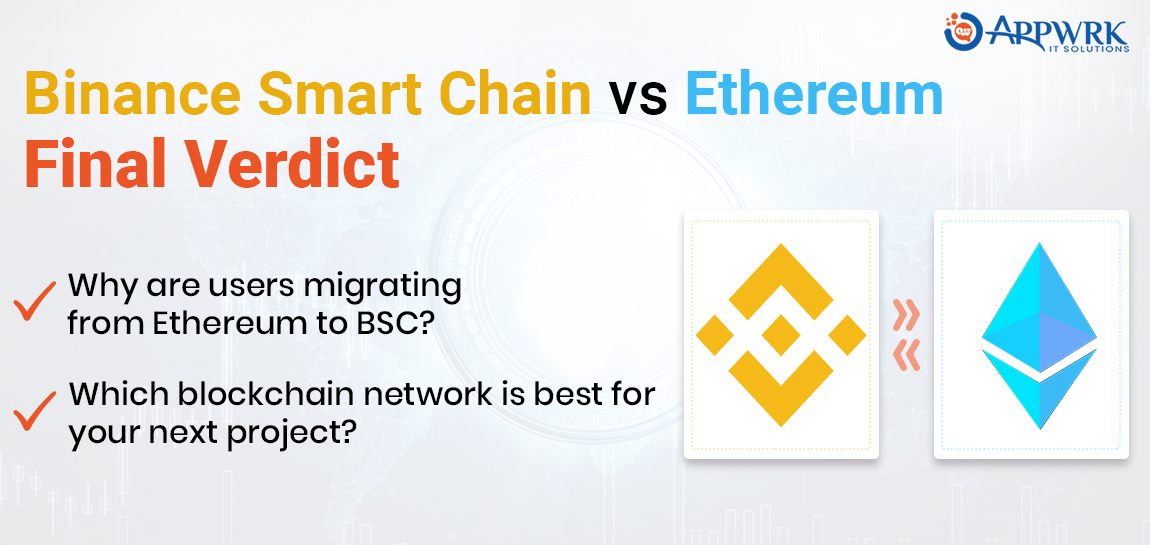
Along with lots of similarities between Binance Smart Chain and Ethereum, there are considerable differences in terms of efficiency and performance. Which blockchain platform to choose? This decision depends entirely on crypto investors’ preferences and comforts. If you are confused, you can understand your project’s need by consulting a proficient blockchain development company.
Let’s discuss why users are migrating to BSC from Ethereum.
The two topmost reasons why Binance Smart Chain is loving more over Ethereum are-
- It is becoming costly for the DeFi sector to use Ethereum due to its high gas price.
- From a security point of view, users feel that BSC is far better.
Although Ethereum still dominates the DeFi space, it is unable to satisfy the frenzy around decentralized finance. On the other hand, the BSC team has efficiently exploited the enhanced excitement around DeFi projects. The users who want to look for less transaction fees and are willing to opt for centralization BSC is the best choice. As we know, everything has its pros and cons, so does the BSC. The biggest drawback of BSC is its centralized nature. Here only 21 validators are elected by the BSC team running everything. Many users and developers don’t like this.
Moreover, BSC has only a few successful projects (Venus PancakeSwap, etc.), while Ethereum, being a decentralized ecosystem, has over 1000 successful projects. One more drawback of BSC noticed by developers is that there is nothing new in this crypto platform. Almost everything is just a copy of Ethereum only. But we can’t deny the fact of lower transaction fees and transaction time in BSC. I think this attracts users, and they are migrating to this blockchain. It is believed that in the near future, Ethereum will continue to be the leading blockchain for the DeFi sector, but in the long run, BSC will take over most of the users of Ethereum. We hope that this write-up will help you in taking the right decision for your next project. What are you waiting for, start your crypto journey today! If you are still confused about a few terms from the blockchain industry, hire blockchain developers from APPWRK!
About The Author
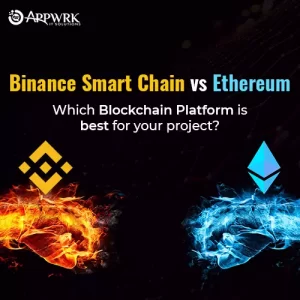
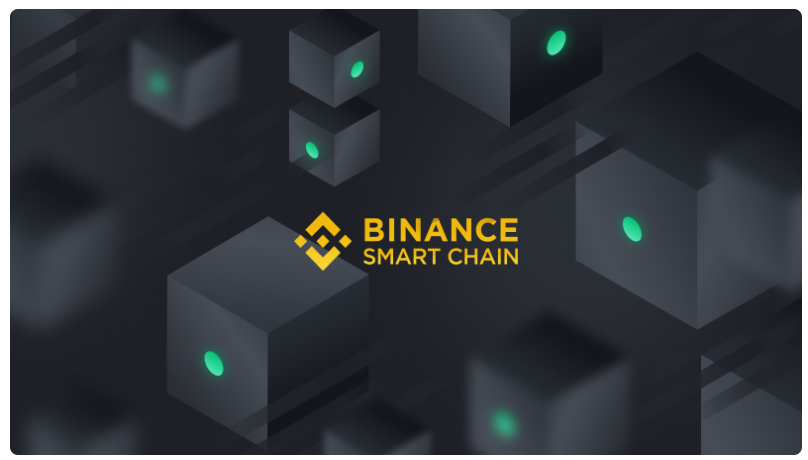
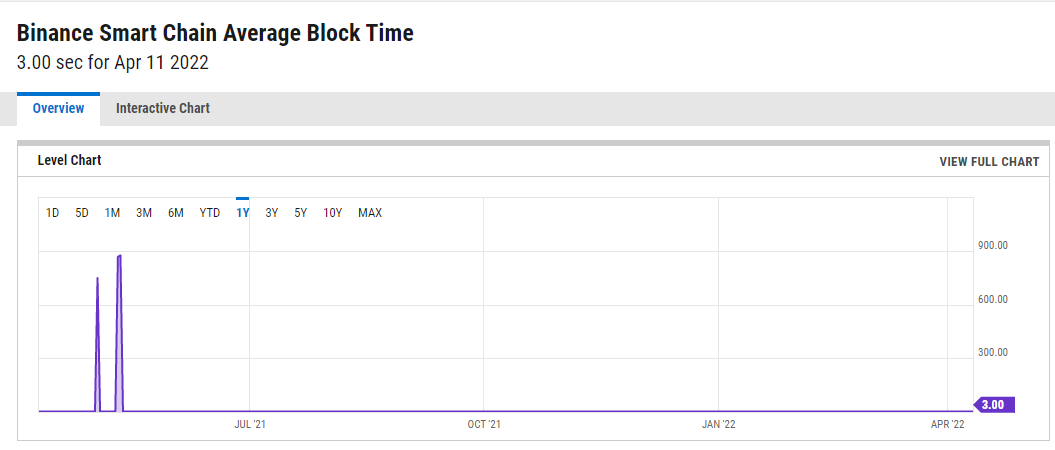


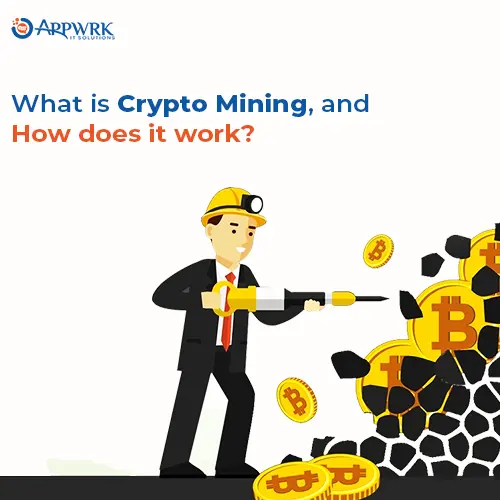
 Free Quote
Free Quote
















































